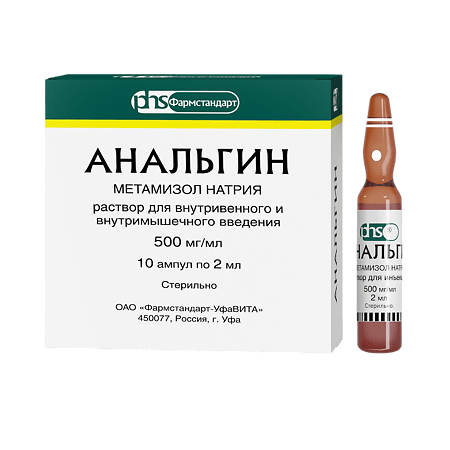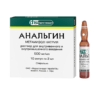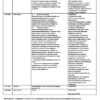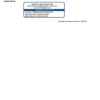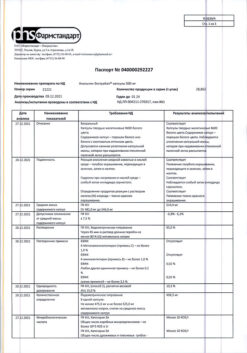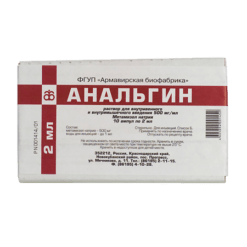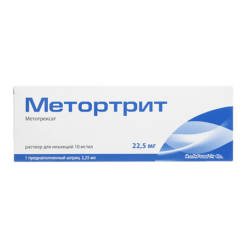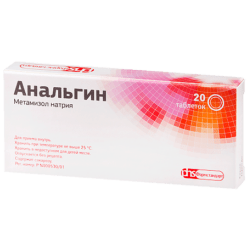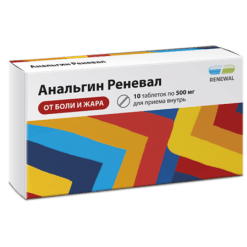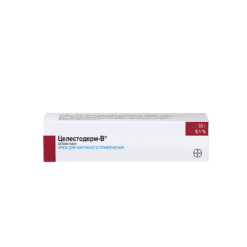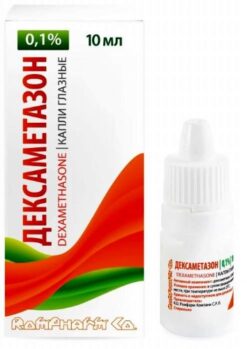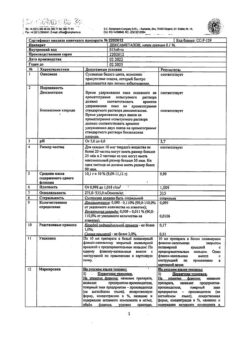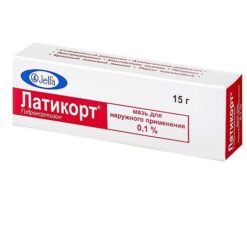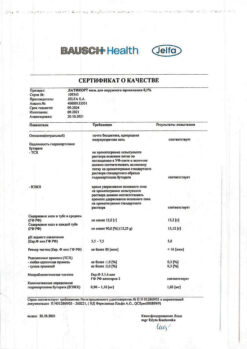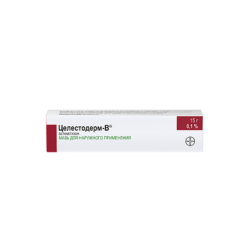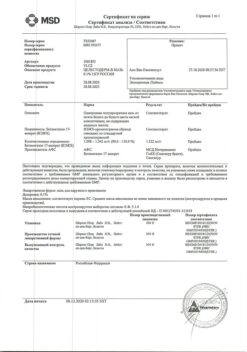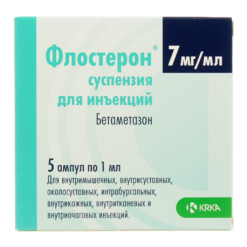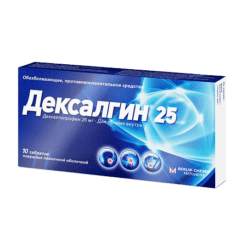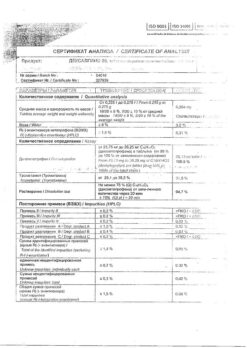No products in the cart.
Analgin, 500 mg/ml 2 ml 10 pcs
€6.48 €5.76
Description
An analgesic non-narcotic medicine.
ATX code [N02BB02]
Pharmacological properties
Pharmacodynamics
It has analgesic, antipyretic and mild anti-inflammatory effects, the mechanism of which is associated with inhibition of prostaglandin synthesis. It is a derivative of pyrazolone.
Pharmacokinetics
In intravenous administration: onset of action – after 5-10 minutes, maximum effect – after 5-30 minutes, duration of action – up to 2 hours. It is metabolized in the liver, a small concentration of unchanged sodium metamizole is found in the plasma, it is excreted by the kidneys. In therapeutic doses penetrates into the mother’s milk.
Indications
Indications
Severe acute or chronic pain syndrome due to injuries and postoperative pain syndrome, colic, cancer and other conditions where other therapeutic measures are contraindicated. Fever resistant to other treatments.
Pharmacological effect
Pharmacological effect
Analgesic non-narcotic drug.
ATX code [N02BB02]
Pharmacological properties
Pharmacodynamics
It has analgesic, antipyretic and weak anti-inflammatory effects, the mechanism of which is associated with inhibition of prostaglandin synthesis. It is a derivative of pyrazolone.
Pharmacokinetics
When administered intravenously: the onset of action is after 5-10 minutes, the maximum effect is after 5-30 minutes, the duration of action is up to 2 hours. Metabolized in the liver, a small concentration of unchanged metamizole sodium is found in plasma and excreted by the kidneys. In therapeutic doses it penetrates into mother’s milk.
Special instructions
Special instructions
When treating children under 5 years of age and patients receiving cytostatic drugs, analgin should be taken only under the supervision of a physician. Patients with atopic bronchial asthma and hay fever have an increased risk of developing hypersensitivity reactions.
With long-term (more than a week) use, monitoring of the peripheral blood picture and the functional state of the liver is necessary.
While taking analgin, agranulocytosis may develop, and therefore, if an unmotivated rise in temperature, chills, sore throat, difficulty swallowing, stomatitis is detected, as well as with the development of vaginitis or proctitis, immediate discontinuation of the drug is necessary. Intolerance is very rare, but the risk of developing shock after intravenous administration of the drug is relatively higher than after taking the drug orally. It is not permissible to use it to relieve acute abdominal pain (until the cause is determined). For intramuscular administration, a long needle must be used.
Active ingredient
Active ingredient
Metamizole sodium
Composition
Composition
Active substance:
metamizole sodium – 250 mg or 500 mg;
excipient:
water for injection – up to 1 ml.
Contraindications
Contraindications
Hypersensitivity to pyrazolone derivatives (phenylbutazone, tribuzone), tendency to bronchospasm.
Severe liver and/or kidney dysfunction, glucose-6-phosphate dehydrogenase deficiency, blood diseases, suppression of hematopoiesis (agranulopitosis, cytostatic or infectious neutropenia), as well as anemia and leukopenia. Bronchoobstruction, rhinitis, urticaria provoked by taking acetylsalicylic acid or other non-steroidal anti-inflammatory drugs (including a history), active liver disease, condition after coronary artery bypass grafting; confirmed hyperkalemia, erosive and ulcerative changes in the mucous membrane of the stomach and duodenum, active gastrointestinal bleeding, inflammatory bowel diseases. Infancy up to 3 months
Use during pregnancy and lactation.
Do not use during pregnancy (especially in the first 3 months and last 6 weeks) and during lactation.
With caution
Coronary heart disease, chronic heart failure, cerebrovascular diseases, dyslipidemia/hyperlipidemia, diabetes mellitus, peripheral arterial disease, smoking, creatinine clearance less than 60 ml/min. anamnestic data on the development of ulcerative lesions of the gastrointestinal tract, the presence of H. pylori infection, old age, long-term use of non-steroidal anti-inflammatory drugs, severe somatic diseases, simultaneous use of oral glucocorticosteroids (including prednisolone), anticoagulants (including warfarin), antiplatelet agents (including acetylsalicylic acid, clopidogrel), selective serotonin reuptake inhibitors (including citalopram, fluoxetine, paroxetip, sertraline).
Particular caution is required when prescribing to patients with systolic blood pressure below 100 mm Hg. Art. or with circulatory instability (for example, with myocardial infarction, multiple trauma, incipient shock), with anamnestic indications of kidney disease (pyelonephritis, glomerulonephritis) and with a long history of alcoholism.
Side Effects
Side Effects
The drug is well tolerated in therapeutic doses.
When using the drug, some patients may experience adverse reactions: allergic reactions (skin rash, Quincke’s edema; rarely anaphylactic shock, Stevens-Johnson and Lyell syndromes, bronchospasm); with long-term use, agranulocytosis, leukopenia, thrombocytopenia, arterial hypotension, and interstinal nephritis may occur. Renal dysfunction, oliguria, anuria, proteinuria, red urine color.
If you are prone to bronchospasm, it is possible to provoke an attack. With intramuscular administration, infiltrates are possible at the injection site.
Interaction
Interaction
Due to the high probability of pharmaceutical incompatibility, it should not be mixed with other drugs in the same syringe. Enhances the effects of ethanol; simultaneous use with chlorpromazine or other phenothiazine derivatives can lead to the development of severe hyperthermia.
Radiocontrast agents, colloidal blood substitutes and penicillin should not be used during treatment with metamizole sodium. With simultaneous administration of cyclosporine, the concentration of the latter in the blood decreases.
Metamizole sodium, displacing oral hypoglycemic drugs, indirect anticoagulants, glucocorticosteroids and indomethacin from protein binding, increases their activity. Phenylbutazone, barbiturates and other hepatoinducers, when administered simultaneously, reduce the effectiveness of metamizole sodium.
Concomitant administration with other non-narcotic analgesics, tricyclic antidepressants, contraceptive hormonal agents and allopurinol can lead to increased toxicity. Sedatives and tranquilizers enhance the analgesic effect of metamizole sodium.
Thiamazole and sarcolysin increase the risk of developing leukopenia. The effect is enhanced by codeine, histamine H2 blockers and propranolol (slows down inactivation). Myelotoxic drugs enhance the hematotoxicity of metamizole sodium.
Overdose
Overdose
Symptoms: nausea, vomiting, gastralgia, oliguria, hypothermia, decreased blood pressure, tachycardia, shortness of breath, tinnitus, drowsiness, delirium, impaired consciousness, acute agranulocytosis, hemorrhagic syndrome, acute renal and/or liver failure, convulsions, respiratory muscle paralysis.
Treatment: induction of vomiting, transtube gastric lavage, saline laxatives, activated charcoal; carrying out forced diuresis, hemodialysis, with the development of convulsive syndrome – intravenous administration of diazepam and fast-acting barbiturates.
Storage conditions
Storage conditions
List B. In a dry place, protected from light, at a temperature not exceeding 25° C.
Keep out of the reach of children.
Shelf life
Shelf life
3 years.
Do not use after the expiration date stated on the package.
Manufacturer
Manufacturer
Pharmstandard-UfaVITA, Russia
Additional information
| Shelf life | 3 years. Do not use after the expiration date printed on the package. |
|---|---|
| Conditions of storage | List B. In a dry place protected from light, at a temperature not exceeding 25 ° C. Keep out of reach of children. |
| Manufacturer | Pharmstandard-UfaVITA, Russia |
| Medication form | solution |
| Brand | Pharmstandard-UfaVITA |
Other forms…
Related products
Buy Analgin, 500 mg/ml 2 ml 10 pcs with delivery to USA, UK, Europe and over 120 other countries.

